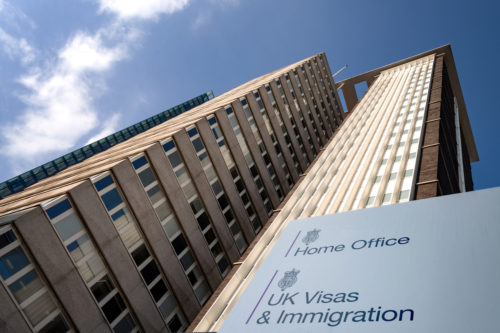The Home Office has issued a new legal right to work checklist designed to help UK employers comply with the Immigration Rules and avoid penalties for hiring illegal workers.
You can access the checklist online at: Right to work checklist (publishing.service.gov.uk)
The new checklist replaces the previous right to work guidance and documents list. It provides a clear and simple step-by-step process for checking the right to work of any prospective or existing employee, using manual, IDVT or online share code. It also includes a list of acceptable documents that can be used to prove the right to work in the UK.
Supplementary Employment
The Home Office recently introduced additional right to work check requirements for anyone employing an individual who is currently on a work visa sponsored by another employer.
Individuals sponsored under a Skilled Worker (or Tier 2 General) visa may be able to work in a limited way for another employer, in addition to their sponsored work, if the additional employment meets specific criteria. This is called supplementary employment.
Employers offering work to anyone under this category you must carry out a right to work check which confirms that they meet all the criteria to undertake supplementary employment. If they don’t, the employer may be liable for a civil penalty of up to £60,000 per employee who does not have the required right to work.
We understand that over the coming months there will be additional enforcement scrutiny of individuals undertaking supplementary employment, so it is vital that employers carry out thorough checks.
Supplementary employment must meet all the following requirements:
- it must be for no more than 20 hours a week;
- the worker must continue working in the job for which their Certificate of Sponsorship (CoS) was assigned;
- the employment must take place outside of the normal working hours for which the worker’s CoS was assigned; and
- it must be one of the following types of eligible employment:
- in the same profession and at the same professional level as the work for which the worker’s CoS was assigned.
- a job which is in an occupation listed in Appendix Immigration Salary List – if the occupation is later removed from this list, the worker must finish that employment.
- for Skilled Workers only, a job which is in an eligible SOC 2020 occupation code listed in Table 1, 2 or 3 of Appendix Skilled Occupations.
If you are employing an individual under supplementary employment rules, you should take steps to ensure the supplementary employment meets the above requirements by, for example, asking the worker to provide a letter or other evidence from their sponsor confirming:
- That they are still working for their sponsor;
- The job description and occupation code of their sponsored employment (if their supplementary employment is not in an eligible SOC 2020 occupation or on the Immigration Salary List); and
- Their normal working hours.
You should also ask the worker if they are doing any other supplementary employment with another employer to ensure they will not be doing more than 20 hours a week in total of supplementary employment.
Visa fees
The Home Office has announced an increase in visa fees, for a small number of visas. The changes apply from 10 April 2024.
The increase, of c.9%, applies only to Skilled Worker and Global Mobility visas of over 3 years, where the individual is applying in the UK, and to visit visas of up to 2 years.
Fee increases have also been introduced to some elements of the nationality process and to applications for the Right of Abode.
Do not hesitate to contact your Magrath Sheldrick representative for further information and guidance.

